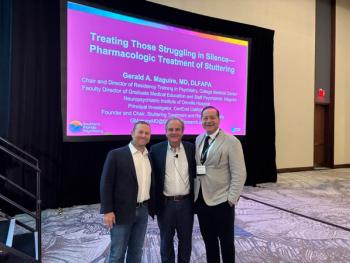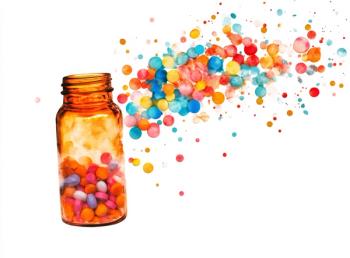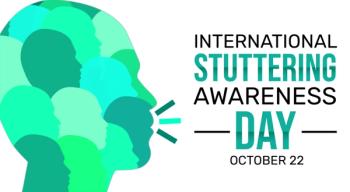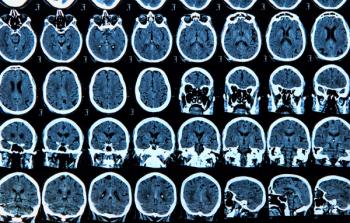
Beyond Survival: Understanding the Long Road to Stroke Recovery
Key Takeaways
- Stroke recovery is complex, requiring individualized rehabilitation addressing communication, mobility, and emotional challenges, with timelines varying significantly among patients.
- Immediate treatment is crucial, especially for ischemic strokes, which require intervention within four hours to restore blood flow and minimize brain damage.
Today is World Stroke Day. Understanding what lies ahead in the road to stroke recovery can help patients and their families prepare for the challenges they will face.
Someone in America dies from a stroke every 4 minutes. That sobering statistic from the Centers for Disease Control and Prevention represents only part of the story. For the approximately 800,000 Americans who experience a stroke every year, survival is just the beginning of a long, challenging journey toward recovery and rehabilitation.
Stroke is the fifth leading cause of death in the United States and a major cause of adult disability, affecting not only patients but also entire families and communities. Yet while much public awareness focuses on recognizing stroke symptoms and seeking emergency care, far less attention is paid to what happens after the initial medical crisis. The weeks, months, and sometimes years of rehabilitation are a complex recovery process. Understanding what lies ahead can help patients and their families prepare for the challenges they will face and the support systems they will need to maximize recovery.
The Critical First Hours: Why Time Matters
When it comes to stroke treatment, time truly makes all the difference. The distinction between types of strokes—ischemic and hemorrhagic—determines the immediate treatment approach and what happens down the line.
Ischemic strokes account for the majority of cases. They occur when an artery supplying oxygen-rich blood to the brain becomes blocked, often by blood clots. Medications such as tissue plasminogen activator or Tenecteplase can break up clots and restore blood flow. However, this treatment must be administered within 4 hours of the first symptoms. This narrow window underscores why calling 9-1-1 immediately—rather than driving to the hospital—is critical. Emergency medical personnel can begin life-saving treatment en route to the emergency department.
Hemorrhagic strokes, caused by bleeding in the brain from a ruptured or leaking artery, require different treatment. Unlike ischemic strokes, they cannot be treated with blood thinners or antiplatelet medications, which worsen the bleeding. Instead, treatment focuses on controlling the bleeding and may involve surgical procedures such as aneurysm clipping, coil embolization, surgical evacuation, or arteriovenous malformation repair.
The type of stroke, the speed of treatment, and the extent of brain damage all influence what recovery will look like for each individual.
The Reality of Recovery: No 2 Journeys Are Alike
One of the most challenging aspects of stroke rehabilitation is the uncertainty. Recovery timelines vary dramatically from person to person. Some individuals recover fully within weeks or months. Others face long-term or lifelong disabilities that require ongoing support and adaptation.
The variability depends on multiple factors such as the location and extent of brain damage, the patient's age and overall health, the quality of rehabilitation services, and the strength of their support system. What remains constant, however, is that recovery requires patience, persistence, and comprehensive rehabilitation support.
The Multifaceted Challenge of Stroke Rehabilitation
Stroke can affect virtually every aspect of a person's ability to function. Patients often struggle with a wide range of challenges that require specialized therapeutic interventions.
1. Communication and Cognitive Challenges
Many stroke survivors experience difficulty with language, speech, and memory. Patients may struggle to find the right words, construct complete sentences, or express thoughts in a coherent way. Some understand what they want to say but cannot physically form the words. Others have difficulty understanding spoken or written language.
These communication barriers can be profoundly frustrating and isolating. Speech and language therapists work with patients to rebuild communication skills through various techniques, from articulation exercises to alternative communication strategies. They also address memory problems and help patients develop compensatory strategies for cognitive challenges.
2. Physical Limitations and Mobility Issues
Stroke typically affects one side of the body, causing paralysis or significant muscle weakness. This creates balance and gait problems and increases the risk of a fall. Simple daily activities like dressing, eating, bathing, suddenly become complex challenges requiring relearning.
Physical therapists focus on strengthening and stretching affected muscles, recovering motor abilities, improving balance and coordination, and helping regain mobility. Occupational therapists adapt the home environments to support independence and safety and address motor recovery in the upper extremity and hand.
The goal is not always the complete recovery of function. Sometimes it is about learning new ways to accomplish tasks, using adaptive equipment, or modifying environments to work around permanent limitations.
3. Hidden Challenges: Bladder, Bowel, and Swallowing Issues
Some of the most difficult challenges stroke survivors face are those they are least comfortable discussing. Stroke can affect the muscles and nerves controlling bladder and bowel function, leading to incontinence or urgency issues that impact quality of life.
Swallowing difficulties (dysphagia) are common after stroke. Signs include coughing or choking during meals or coughing up food after eating. These issues are not merely inconvenient—they pose serious health risks, including malnutrition, dehydration, and aspiration pneumonia.
Speech therapists assess and treat swallowing problems, sometimes recommending dietary modifications such as pureed foods or thickened liquids. Bladder and bowel specialists can help manage incontinence. Addressing these challenges directly and without shame is essential for both physical health and emotional well-being.
4. The Emotional Toll of Stroke
Perhaps the least visible but most pervasive challenge of stroke recovery is its emotional impact. Stroke can cause changes in behavior, judgment, and emotions. Patients may experience rapid mood swings, personality changes, or difficulty controlling emotional responses.
Depression, anxiety, and fear are common and understandable responses to the sudden loss of abilities and independence. They can also be a result of the neurological injury itself. The slow pace of recovery can be frustrating, leading some patients to lose hope or motivation. These emotional challenges can impede physical recovery, creating a difficult cycle.
Professional counseling, patient support groups, and sometimes medication can help address these emotional needs. Connecting with others who have experienced stroke can be particularly valuable, helping patients realize they are not alone in their struggles and learning from others' coping strategies.
The Importance of Ongoing Medical Management
Recovery from stroke is not just about rehabilitation—it is also about preventing another stroke. Stroke survivors face an elevated risk of future stroke, making ongoing medical care essential.
This typically involves managing risk factors through lifestyle modifications and medications. Patients may need to quit smoking, adopt healthier diets, maintain healthy weight, and increase physical activity. Many patients will require ongoing medications to control blood pressure, cholesterol, or blood clotting.
For those taking anticoagulants (blood thinners), regular monitoring is crucial. While these medications help prevent clots, they also increase the risk of bleeding. Patients need to watch for warning signs of excessive bleeding, including unexplained bruising, bleeding gums, blood in urine or stool, or severe headaches.
The Role of Support Systems
No one recovers from stroke alone. Family members, friends, and caregivers play crucial roles in recovery, but they also face their own challenges and stress. The person who had the stroke has changed, sometimes dramatically, and relationships must adapt.
Family members often become caregivers without training or preparation. They may need to help with bathing, dressing, medication management, and transportation. They witness their loved one's frustration and pain while managing their own fears and grief about the changes stroke has brought to their lives.
Support groups exist not just for stroke survivors but also for their families and caregivers.
Looking Forward: Hope and Realistic Expectations
Stroke recovery requires balancing hope with realistic expectations. Medical advances continue to improve both immediate stroke treatment and rehabilitation techniques. Neuroplasticity—the brain's ability to form new and adapt existing neural connections—means that recovery can continue for months or even years after stroke.
However, the reality is that some stroke survivors will have permanent disabilities requiring long-term adaptations. This does not mean life cannot be meaningful and fulfilling, but it does require adjusting expectations and finding new ways to engage.
The most successful recovery journeys involve comprehensive, coordinated care addressing all aspects of stroke's impact—physical, cognitive, emotional, and social. They require patience, persistence, appropriate rehabilitation services, strong support systems, and ongoing medical management.
At Centre for Neuro Skills, we have seen countless stroke survivors make remarkable progress through dedicated rehabilitation and support. While the path is rarely easy, understanding what to expect and having the right resources and support can make all the difference in maximizing recovery and rebuilding meaningful lives after stroke.
Dr Ashley is a neurologist and chief medical officer for the Centre for Neuro Skills.
Newsletter
Receive trusted psychiatric news, expert analysis, and clinical insights — subscribe today to support your practice and your patients.











